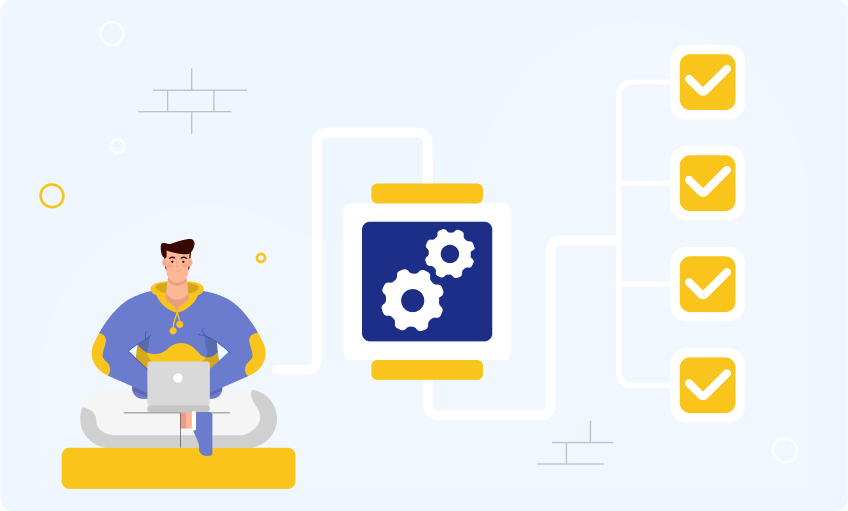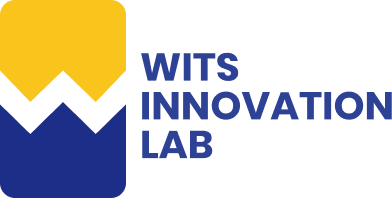Published - 3 months ago | 6 min read
Testing AI Agents: Why Modern QA Demands More Than Unit Tests
AI agents have leapt from the lab to the enterprise in just a few years, transforming workflows in sales, support, coding, and research. But while shipping an MVP is now faster than ever, the same isn’t true for testing these new intelligent systems. If you’re still relying on unit tests, integration tests, and code coverage reports, you’re missing critical risk—because AI agents are fundamentally different from deterministic software.
This post unpacks the unique technical challenges of testing AI agents, breaks down practical approaches for prompt and workflow evaluation, details the new tools (Promptfoo, Langfuse, etc.) that support modern AI QA, and offers actionable best practices for shipping robust, production-grade agents.
This post unpacks the unique technical challenges of testing AI agents, breaks down practical approaches for prompt and workflow evaluation, details the new tools (Promptfoo, Langfuse, etc.) that support modern AI QA, and offers actionable best practices for shipping robust, production-grade agents.
The Inherent Complexity of AI Agents
Non-Determinism and Probabilistic Outputs
Traditional software is deterministic: the same input always produces the same output. Classic QA methodologies—unit, integration, end-to-end testing—work well because outcomes are predictable. AI agents, built atop large language models (LLMs), are stochastic by nature. Given identical inputs, responses may differ due to temperature settings, context, or internal randomness. This non-determinism invalidates the bedrock assumptions of most legacy testing strategies.
Multi-Step Reasoning and Tool Orchestration
Modern AI agents aren’t just chatbots—they’re orchestrators. They:
- Maintain context across multi-turn conversations
- Call external tools, APIs, or databases
- Remember past actions and plan future steps
- Collaborate with other agents (multi-agent chains)
Failures can arise not just in outputs, but in reasoning, tool choice, sequence, or memory recall. A bug may not break the system but may produce subtly wrong, misleading, or unsafe behavior—often undetected by classic test assertions.
- Maintain context across multi-turn conversations
- Call external tools, APIs, or databases
- Remember past actions and plan future steps
- Collaborate with other agents (multi-agent chains)
Failures can arise not just in outputs, but in reasoning, tool choice, sequence, or memory recall. A bug may not break the system but may produce subtly wrong, misleading, or unsafe behavior—often undetected by classic test assertions.
Emergent Behavior and Model Drift
AI agents exhibit emergent behaviors. Updates to model weights, changes in prompt templates, or external system upgrades can introduce new patterns of failure, sometimes months after launch. Unlike traditional regression bugs, these don’t stem from code changes—they’re the product of shifting model landscapes and operational context.

Why Unit Testing Alone Falls Short
Fixed Assertions vs. Open-Ended Outputs
Unit tests depend on asserting that output X matches expected value Y. But in AI, multiple outputs may be correct, and what matters is not string equality but relevance, safety, and adherence to business logic.
Example: Prompt: “Summarize this refund policy.”
Valid outputs can differ in tone, structure, and length. Unit tests that require an exact match will either fail or (worse) pass while missing dangerous edge cases.
Example: Prompt: “Summarize this refund policy.”
Valid outputs can differ in tone, structure, and length. Unit tests that require an exact match will either fail or (worse) pass while missing dangerous edge cases.
Hidden Failure Modes
Many of the most damaging AI failures aren’t code errors. Instead, they’re:
- Hallucinations: Factually wrong but plausible outputs
- Context loss: The agent “forgets” part of the conversation or key facts
- Unsafe or toxic responses
- Overconfidence in ambiguous situations
These are rarely caught by classic test suites. They’re failures in reasoning or contextual judgment, not simple logic.
- Hallucinations: Factually wrong but plausible outputs
- Context loss: The agent “forgets” part of the conversation or key facts
- Unsafe or toxic responses
- Overconfidence in ambiguous situations
These are rarely caught by classic test suites. They’re failures in reasoning or contextual judgment, not simple logic.
Code Coverage and False Confidence
High test coverage is meaningless for LLM-based agents. You may exercise every function, but if your prompts, retrieval chains, or model choices aren’t robust, real-world usage will still trigger breakdowns.
Security and Compliance
- Total Responsibility: You own all aspects of compliance, security, and privacy.
- Audit Burden: Every new regulation (GDPR, CCPA, PCI, etc.) requires continuous updates, documentation, and regular testing.
- Breach Costs: A single breach can cost millions and irreparably damage your brand.
- Audit Burden: Every new regulation (GDPR, CCPA, PCI, etc.) requires continuous updates, documentation, and regular testing.
- Breach Costs: A single breach can cost millions and irreparably damage your brand.
Testing at the Prompt and Workflow Level
Prompts Are Code: Treat Them That Way
For LLM agents, prompts are the primary “code” that dictates behavior. A poorly phrased prompt is equivalent to a buggy function. As agents evolve, maintaining prompt reliability is as critical as code QA.
Best Practices:
- Prompt suites: Collections of input scenarios with expected behavioral criteria (accuracy, relevance, completeness).
- Prompt regression: Rerun suites after every model or prompt change to catch silent regressions.
- Prompt versioning: Treat prompts as version-controlled artifacts, with clear lineage and links to model versions.
Best Practices:
- Prompt suites: Collections of input scenarios with expected behavioral criteria (accuracy, relevance, completeness).
- Prompt regression: Rerun suites after every model or prompt change to catch silent regressions.
- Prompt versioning: Treat prompts as version-controlled artifacts, with clear lineage and links to model versions.
Structured Prompt Evaluation
Modern QA tools like Promptfoo let teams:
- Define prompt test cases (inputs, ground truth, evaluation metrics)
- Compare outputs across model versions or parameter settings
- Score outputs by factuality, helpfulness, safety, and other custom metric
Why it matters:
Prompt failures often look like “it didn’t answer well”—not a crash, but an erosion of user trust. Only structured, repeatable prompt evaluation surfaces these weaknesses.
- Define prompt test cases (inputs, ground truth, evaluation metrics)
- Compare outputs across model versions or parameter settings
- Score outputs by factuality, helpfulness, safety, and other custom metric
Why it matters:
Prompt failures often look like “it didn’t answer well”—not a crash, but an erosion of user trust. Only structured, repeatable prompt evaluation surfaces these weaknesses.
Testing RAG (Retrieval-Augmented Generation) Systems
RAG agents combine LLM generation with retrieval from private or external sources. They require dual-layer QA:
- Retrieval QA: Did the agent fetch the right documents or facts?
- Generation QA: Did it use that context correctly, attribute sources, and avoid hallucinations?
Testing RAG agents involves simulating diverse queries, verifying document retrieval accuracy, and ensuring answer grounding.
- Retrieval QA: Did the agent fetch the right documents or facts?
- Generation QA: Did it use that context correctly, attribute sources, and avoid hallucinations?
Testing RAG agents involves simulating diverse queries, verifying document retrieval accuracy, and ensuring answer grounding.
Observability and Tracing for AI Agents
Why Observability is Essential
Traditional logs won’t cut it for agents that chain prompts, tool calls, and multi-step reasoning. You need end-to-end traces: visibility into every action, input, output, and model decision throughout an agent’s lifecycle.
Modern tools (e.g., Langfuse) provide:
- Session-level traces: Every prompt, every tool/API call, each intermediate step, linked together
- Metadata tagging: Track which prompt, model version, or feature flag was live for every user session
- Latency and cost breakdowns: Token usage, call durations, and error rates for each step
- Session-level traces: Every prompt, every tool/API call, each intermediate step, linked together
- Metadata tagging: Track which prompt, model version, or feature flag was live for every user session
- Latency and cost breakdowns: Token usage, call durations, and error rates for each step
Debugging Real Failures
When an agent fails in production:
- Was it a model update, a prompt change, or external data drift?
- Did a retrieval miss, or did the agent misinterpret what it found?
- Was it a tool integration, API instability, or context overflow?
Tracing lets you answer these questions fast—cutting hours of guesswork down to minutes.
- Was it a model update, a prompt change, or external data drift?
- Did a retrieval miss, or did the agent misinterpret what it found?
- Was it a tool integration, API instability, or context overflow?
Tracing lets you answer these questions fast—cutting hours of guesswork down to minutes.
Managing Prompts, Versions, and Experiments at Scale
The Problem With Hardcoded Prompts
When prompts are buried in application code, you can’t track or improve them. Teams quickly lose sight of which version is in production, how changes affected performance, or how to roll back a bad update.
Prompt CMS and Version Control
Best practice is to manage prompts like content—not code:
- Store in a CMS or config system, not source files
- Version every change; link to model updates and test results
- Tag prompts for environment (staging, production), user cohort, or A/B test
- Store in a CMS or config system, not source files
- Version every change; link to model updates and test results
- Tag prompts for environment (staging, production), user cohort, or A/B test
A/B Testing and Model Comparisons
Serve different prompt or model versions to subsets of users. Measure:
- Output quality and factuality
- User engagement, task completion, and business KPIs
- Edge case and adversarial performance
- Output quality and factuality
- User engagement, task completion, and business KPIs
- Edge case and adversarial performance

Monitoring for Drift, Instability, and Change
The Reality of Model and Data Drift
LLM providers push updates. Retrieval indexes grow and shift. Prompt “fixes” can introduce new failures. Monitoring for drift is now mandatory.
Automated Regression and Evaluation
Run scheduled prompt suites and test flows on each model/prompt combo in production. Flag deviations in output, response time, or quality metrics.
Escalation and Fallback Strategies
If an agent produces low-confidence, ambiguous, or unsafe outputs:
- Trigger human review
- Ask for user clarification
- Roll back to a known-safe version
- Use guardrails or simpler fallback workflows
- Trigger human review
- Ask for user clarification
- Roll back to a known-safe version
- Use guardrails or simpler fallback workflows
Human-in-the-Loop and User Feedback
Closing the Gaps
Automated tests only go so far. Real users surface:
- New edge cases and ambiguous inputs
- Shifts in context or domain expectations
- Subjective failures (tone, clarity, usefulness)
- New edge cases and ambiguous inputs
- Shifts in context or domain expectations
- Subjective failures (tone, clarity, usefulness)
Integrating Human Review
- Let users flag errors or unsatisfactory responses in production.
- Route flagged outputs to prompt engineers and QA for review and test case inclusion.
- Periodically sample outputs for in-depth expert evaluation, especially for regulated or safety-critical domains.
- Route flagged outputs to prompt engineers and QA for review and test case inclusion.
- Periodically sample outputs for in-depth expert evaluation, especially for regulated or safety-critical domains.
Engineering Best Practices for Reliable AI Agents
Closing the Gaps
Layer your QA: Combine prompt-level, workflow, integration, and business metric tests.
Invest in observability from day one: Tracing is as vital as logging in distributed microservices.
Automate regression and edge case testing: Don’t rely on “happy path” demos.
Blend LLM-based scoring with human feedback: LLM-as-judge is scalable, but humans catch what models miss.
Track everything: Model, prompt, and tool versioning should be first-class concerns.
Plan for failure: Build escalation, monitoring, and rapid rollback into your workflows.
Align tests to business goals: Focus on outcomes—accuracy, safety, user satisfaction, and real-world value.
Invest in observability from day one: Tracing is as vital as logging in distributed microservices.
Automate regression and edge case testing: Don’t rely on “happy path” demos.
Blend LLM-based scoring with human feedback: LLM-as-judge is scalable, but humans catch what models miss.
Track everything: Model, prompt, and tool versioning should be first-class concerns.
Plan for failure: Build escalation, monitoring, and rapid rollback into your workflows.
Align tests to business goals: Focus on outcomes—accuracy, safety, user satisfaction, and real-world value.
Conclusion
Testing AI agents demands a wholesale shift from traditional QA. Unit tests catch broken logic—but not hallucinations, context drift, multi-agent miscommunication, or the myriad ways in which AI systems can fail. Production-ready agents require a layered, data-driven, and observability-first testing culture.
By moving beyond fixed assertions, embracing prompt and workflow evaluation, investing in deep observability, and continuously iterating with human feedback, you can build AI agents that are not only powerful but also safe, reliable, and trusted in production.
The future of software QA is being rewritten—one prompt at a time.
By moving beyond fixed assertions, embracing prompt and workflow evaluation, investing in deep observability, and continuously iterating with human feedback, you can build AI agents that are not only powerful but also safe, reliable, and trusted in production.
The future of software QA is being rewritten—one prompt at a time.

Written by / Author
Manasi Maheshwari
Found this useful? Share With
Top blogs
Most Read Blogs
Wits Innovation Lab is where creativity and innovation flourish. We provide the tools you need to come up with innovative solutions for today's businesses, big or small.
© 2025 Wits Innovation Lab, All rights reserved
Crafted in-house by WIL’s talented minds

